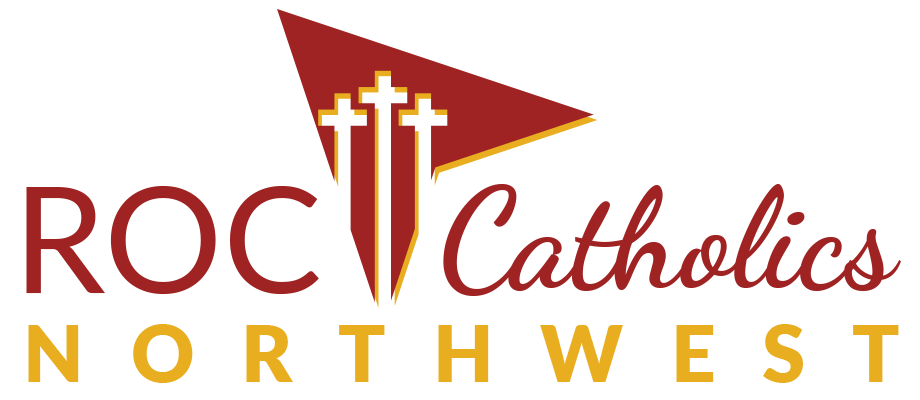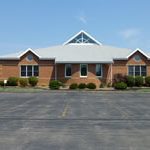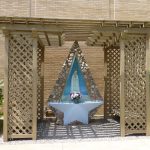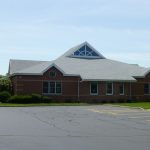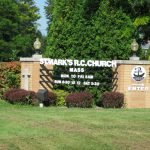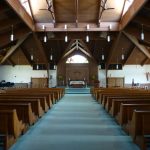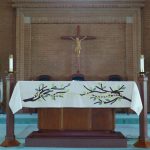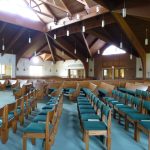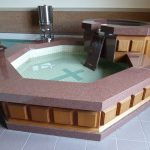54 Kuhn Rd
Rochester, NY 14612
Phone: (585) 227-6824
Fax: (585) 225-6517
Office Hours: Monday 8:30 AM-noon, 12:30-3:00 PM
Tuesday-Thursday 8:30-11:30 AM
Email:
Website: www.stmarksgreece.com
Mass Times:
Saturday: 5:00pm
Sunday: 8:30am
Sunday: 11:00am (Livestream)
Monday: 8:00am (Livestream)
Tuesday: 8:00am (Livestream)
Wednesday: 8:00am (Livestream)
Thursday: 8:00am (Livestream)
Friday: 8:00am (Livestream)
Confession Times
Saturday: 3:00pm - 4:30pm
Sacrament of Penance
Livestream
Daily Mass 8:00 AM and Sunday 11:00 AM Mass Livestream on Facebook
Events:
Bereavement Ministry
December 18 @ 12:00 pm - 2:00 pmBereavement Ministry
January 8, 2026 @ 12:00 pm - 2:00 pmBereavement Ministry
January 15, 2026 @ 12:00 pm - 2:00 pmBereavement Ministry
January 22, 2026 @ 12:00 pm - 2:00 pmBereavement Ministry
January 29, 2026 @ 12:00 pm - 2:00 pmBereavement Ministry
February 5, 2026 @ 12:00 pm - 2:00 pmBereavement Ministry
February 12, 2026 @ 12:00 pm - 2:00 pmBereavement Ministry
February 19, 2026 @ 12:00 pm - 2:00 pmBereavement Ministry
February 26, 2026 @ 12:00 pm - 2:00 pmBereavement Ministry
March 5, 2026 @ 12:00 pm - 2:00 pm
St. Mark's Roman Catholic Church ... Called by God's love to live the life of Jesus in our world."
St. Mark’s Parish History
On June 27, 1964, a new parish dedicated to St. Mark the Evangelist and named in his honor, was established in the northwest section of the Town of Greece, New York. A new people of God were formed, with a new and unique identity and spirit.
To have been part of the establishment and development of this parish as you, its parishioners, and I have been the privilege of a lifetime. At the close of its second decade, it is appropriate to look back on the story of its earliest years.
St. Mark’s was founded to take care of the growing numbers of Catholics living along the lake in the Town of Greece. The boundaries assigned to it by Bishop James E. Kearney were to be as follows: on the north, Lake Ontario: on the east, Island Cottage Road to Janes Road; on the south, Janes Road and the New York Central Railroad west to Manitou Road; on the west, Manitou Road and Fayne Beach Road north to Lake Ontario. Thus the new parish included part of what had previously belonged to Mother of Sorrows and St. Leo’s Parishes.
St. Mark’s Parish came into existence almost three hundred years after Catholicism had first been introduced into the Rochester area, 161 years after the opening of Rochester’s first parish, and 135 years after the Catholics of Greece began to build Mother of Sorrows Church (originally St. Ambrose) at the corner of Latta Road and Mt. Read Boulevard.
The first priests in this area were French Jesuit Fathers who worked among the Seneca Indians during the period from 1656 to 1709. These valiant missionaries ministered to the natives in their villages near the present villages of Lima and Victor, New York. But after the American Revolution, European Catholics began to immigrate to the Town of Greece and the neighborhood beside the Genesee Falls where the village of Rochester was founded in i808. St. Patrick’s Church, opened in 1823 at the corner of Flatt Street and Frank Street (now North Plymouth Avenue), was the first Catholic house of worship from the Genesee River west to the Niagara River. Even before the founding of Rochester, from 1805 on, an Irish Catholic farming community had been taking form in the Township of Greece. It was the people of this community who opened St. Ambrose Church on Paddy Hill in 1832. The Greece lakeshore was the northern boundary of this Mt. Read Parish.
Northern Greece remained largely a farming community until well after World War 1. Along the lakeshore, however, there were many summer cottages by 1970, Since they were quite far removed from both Mother of Sorrows and its daughter churches, St. Leo’s and Holy Cross, Catholic cottagers eventually asked if a "chapel of ease" could be set up to accommodate them during the summer months.
A great many of the Catholic cottagers were members of the two German parishes on the west side of Rochester, St’s. Peter and Faul’s and Holy Family. In 1906, Mr. William Brayer approached the Pastor of Holy Family Parish, Father Dietrich Laurenzis, asking for his help in getting the new chapel started. Father Laurenzis replied early in 1906 that Bishop McQuaid had given permission to the petitioners to erect a chapel at a cost of no more than $1,000.00.
The committee in charge had a drive for funds and built the chapel on Edgemere Drive at a cost of $2,000. It was blessed and opened in 1907 by Father William I. Rice, a nephew of Mr. and Mrs. Anthony Kleinhans who had donated the land on which the chapel was built.
The construction had been supervised by the Pastor of St’s. Peter and Paul’s Church, Rev. Dr. Francis Sinclair. The Star of the Sea became popular and required improvements in 1922 and 1923, including the addition of a small residential wing and the lengthening of the chapel itself.
Father Sinclair died in 1907. His successor as Pastor of St’s. Peter and Paul’s, Father J. Emil Gefell, continued for a while to offer Sunday Mass at Grandview Beach. Priests from St. Patrick’s Cathedral followed him. But the two chaplains who became especially identified with the Star of the Sea were Rev. Msgr. John Francis Goggin (in charge from 1915 to 1956) and Rev. Msgr. Francis B. Burns (1957-1964). Both were professors at St. Bernard’s Seminary.
Msgr. Goggin and Msgr. Burns gave unselfishly of themselves to the work of the education of future priests and indeed distinguished themselves in this work. Both found a pastoral outlet in the lakeside apostolate. Older parishioners remember well their learned sermons, their inspired love of the Church of Christ, and their interest in the lives of the parishioners at the lake.
The sixties will be remembered as a decade of change in the world and the Church as well. In his first encyclical, ("His Church"), Pope Paul VI stated that the changes undertaken by the Church at that time represented an effort to “preserve the characteristic features which Christ impressed on His Church." the changes, if hard to introduce and implement, were providential’ they were an attempt to bring back some of the things Christ had given His church which had become eroded in the course of the centuries. Such erosion happens to all living things and the Church is a living institution; she is the living body of Christ, as St. Paul says (Co.1:18)
Like change, growth is characteristic of things living. It is part of the life of the Church. It is expressed particularly in the establishment of a new parish. Every new parish represents a very real extension of God’s Kingdom on earth. (Luke 1:33)
It was an historic moment when the Bishop of Rochester, the Most Revered James E. Kearney, commissioned Father Joseph D. Donovan, Assistant Pastor of Holy Rosary Church in Rochester, “to establish a new parish in the northwest sector of Greece. The parish will be called St. Mark’s. The site is still to be determined." Such was the beginning of the new parish in this lakeside area. It was a new, if tiny, part of the Church, the Body of Christ. Somehow its beginnings seemed reminiscent of the beginnings of the greater Church of Christ on the shores of the Sea of Galilee almost two thousand years ago.
Humanly speaking, the task of establishing a new parish was a tremendous challenge for the people of God at St. Mark’s and their Pastor. But the blessing of God was to be upon the work of their hands.
The Diocese turned over to the fledgling parish dedicated to St. Mark the little chapel of the Star of the Sea at 2164 Edgemere Drive to be used as its temporary place of worship. The “little chapel," as it was known, was what Church Law calls "a chapel of ease," a house of worship for the convenience of the people living in the area.
The First Masses
The first Masses at St. Marks Parish were celebrated in the Star of the Sea Chapel on Sunday, June 268, 1964. There were 160 parishioners in attendance. The collection amounted to 141.065. Monsignor Burns, in his kindly way, assured the fledgling Pastor that the collection would be up. It was. It reached $320.25 by the middle of July. As the Church bulletin (then called "The Pastor’s Letter") put it: "It is inspiring to see the enthusiasm for the new parish that we see everywhere."
Everyone realized that the first responsibility of the new parish would be to provide adequate facilities for a full program of Parish activities. Accordingly, a parish drive to raise an ambitious $100,000. was planned for the fall of 1964. But, before the drive, St. Mark’s would have to develop some kind of parish identity. It would be necessary to bring together the separate communities that made up the new parish: the Grandview Beach people along Lowden Point Road, the Crescent Beach parishioners, the Manitou Beach folks, and those at Payne Beach. There was no general parish consciousness yet. A committee of ladies took care of that. Under the direction of Mrs. Sigurd Bo, a reception for the Pastor afforded all an opportunity to meet their fellow parishioners and their new Pastor. The reception was well attended and helped enormously to bring the parish spirit to the new parish.
The fall drive was headed by The Honorable Charles F. Stockmeister, member of the New York State Assembly and first St. Mark’s Men’s Club President. Mr. Thomas A. Connor and Mr. Howard Witzel were Vice-chairmen. Mr. Elmer Boehmer headed the Advisory Committee on which the Messers, Donald Blanchard, Robert J. Brown, Fred T. McCormick, and William T. Nolan also served. Mr. James Higgins of Foley Associates directed the drive. The drive was successful, going over the top by $20,000, Everyone was overjoyed. The Pastor observed in the bulletin: "You and I are pioneers. We have entered upon a great adventure in attempting to set up a new parish here. What we are doing has called for sacrifice, such as leaving the churches that were like home to us, offering up comforts and giving up conveniences, even giving generously of our material resources ... but it is God who asks us to make these sacrifices. It is His Holy Will, not merely yours or mine, that this new parish be established. What a privilege it is to help in extending God’s kingdom on earth. This is what establishing a new parish means."
Since the beginning of the parish in June, the Pastor lived in a room attached to the Chapel. It was described as an excellent "duck blind," but hardly a rectory. It was a combined office, confessional room, kitchen, and pantry. It was great for the outdoor man, open to the lake winds. A more adequate rectory was purchased from Mr. William Bal) at 110 Long Pond Road and the Pastor moved in at the end of October. He was delighted. Now he would not have to worry about living with wind and snow and rain. The day he moved out there were two inches of snow - on the bed.
Ground was broken for the new Church and Hall on Ascension Thursday of 1965, Mr. Joseph R. Vasile of S.P. Vasile Company, a devoted “summer parishioner" of St. Mark’s, was the general contractor. Mr. Fred McCormick of McCormick Mechanical Corporation, also a very loyal parishioner, had the plumbing and heating contract, while Mr. Anthony Cashette of Cashette Electric corporation, an old friend of the Pastor from his St. Margaret Mary days, was to do the electrical work. For these men, all of them, their task was a labor of love. The building was ready for occupancy by Christmas when the first Mass was celebrated. It was at midnight and the attendance was an estimated 400 people. The occasion was one of the greatest joys, shared by many non-Catholic friends and neighbors who honored St. Mark’s by their presence.
Through the offices of Monsignor John Randall, the services of Mr. Robert Stickle of Stickle Associates of Cleveland had been obtained. Mr. Stickle’s firm had designed some 200 churches, thirty of which were for beginning parishes like St. Mark’s. To the Pastor the availability of such a team of planners and contractors for the St. Mark’s job seemed nothing short of providential. God was good to us as He always is.
The official dedication of the new St. Mark’s Church and Hall took place on Thanksgiving Day, 1946, with Monsignor James C. McAniff, Vicar General of the Diocese of Rochester officiating. With Bishop Casey and Monsignor Randall, Monsignor McAniff was a good friend of St. Mark’s and its Pastor and helped steer us through the uncharted waters of parish development. All three friends are now with God.
The Parish Bulletin of November 20, 1966, in announcing the dedication of the new St. Mark’s Church, stated, "it would be ’an event recorded importantly in the history of this community and of the diocese.’ With almost prophetic accents the article went on:
But the building of a new church is of more than historical importance. It is a great act of religion itself on the part of a people. Though it is built of steel and of stone, there is something of the very fabric of faith in it. It is the home of the living God and, in a very real sense, the home of His people as well. Within its hallowed walls the young are received to be born again in Holy Baptism. In it men find the comfort of forgiveness and the supernatural nourishment of the Bread of Life. In it, in the sacrament of Matrimony, our homes have their consecrated beginning and their continued strength.
The blessing of God will be upon all who have given Him this worthy temple, this ‘house of God and gate of heaven.’" Gen.28:17.
The old chapel days were now over. Gone were the dangers of flood and fire. The little chapel had seen the ugliest storms the Lake could muster over the years. Gone for good was the possibility of going to Mass by boat or, for that matter, by trolley, for the old Manitou Line had since given up the ghost. Al Helfer would no longer cultivate the beautiful flowers that everyone admired in front of the chapel. Jimmie Powers would no longer have to battle the savage snow storms to dig out the little chapel in the lakeside winters. Owen Getty, St. Mark’s friendly neighbor across the street, would no longer have to open the chapel and get it ready for Mass on the forbidding winter mornings. Florence Menzner or May Grim, also neighbors, would no longer be approached by the Pastor for whatever his limited larder might have lacked, bit it tea or coffee or cereals. (The good man of the cloth was no cook, beyond the essentials of breakfast or even lunch, but his good people always came to his rescue.) His classmate, Monsignor Richard M. Quinn, Rector of St. Andrew’s Seminary, was always good for a meal, too, and the Pastor would often speed the nine miles to the seminary to partake of the prelatial cuisine. The chapel might have been the best duck blind in the diocese, but a fellow had to eat; duck season might be a long wait.
Assisting Clergy at St. Mark’s
At the time of the founding of St. Mark’s Parish in the middle sixties, Bishop Lawrence B. Casey was Auxiliary Bishop of the Rochester Diocese in charge of personnel. Bishop Casey was a good friend of St. Mark’s and followed the progress of the parish very closely even after he left the Diocese to become Bishop of the Diocese of Paterson, New Jersey. The parish was less than three months old when he sent Father Thomas W. Burr of the faculty of St. Andrews Preparatory Seminary to help the Pastor with the masses and preaching at St. Mark’s on weekends. Father Burr remained with St. Mark’s until the following summer. He is now Pastor of St. Joachim’s Church in Canisteo, New York and nearby St. Mary’s in Rexville. The latter church was burned to the ground in 19983 and has been replaced with a very beautiful new facility which is a model of its kind.
Father Burr was succeeded by Father Joseph L. Hogan who came on July 4, 1965, a date that the witty future Bishop would surely have had something to say about. Father Hogan remained with St. Mark’s for three years. His years included the famous storm of 1966 when the church remained inaccessible for two full days. The Pastor, then younger and more athletic, made it to the front door on snowshoes and dug down with his shovel to gain entry. He found the heat off and the temperature at 36 in the building. But Father Hogan had had "no trouble" in getting to his brother’s home in Good Council Parish after the Sunday Mass. When he got back to the Seminary, he found himself without the seminary culinary staff; he rose to the occasion and took on the job himself. How versatile future Bishops have to be! Father Hogan remained with the parish for three years. He was the organizer of the Becket Hall program and supervised the construction of its beautiful facility on the St. John Fisher College campus.
Beginning in the fall of 1966, Father Louis J. Hohman, a former assistant of Bishop Casey’s at the Cathedral and at this time in seminary work at Becket Hall, alternated with Father Hogan for a while and took over after Father Hogan was transferred. Like Father Hogan, Father Hohman was a brilliant speaker. He assisted Father Hogan at Becket Hall and later took over as the second Rector of the institution.
During the summer of 1968, Father Michael Hogan, brother of the future Bishop, alternated with Father Hohman at St. Mark’s on weekends. Father Michael was secretary to Bishop Fulton J. Sheen, the Bishop of the Rochester Diocese. As Father Mike would put it, it was just one Hogan after another. Anyway, St. Mark’s was delighted.
Father Thomas G. Lenhard, professor of Liturgy at St. Bernard’s Seminary, followed Fathers Hohman and Michael Hogan at St. Mark’s. Father was very young but had already done graduate work in Rome. He remained at St. Mark’s weekends until the fall of 1969 when he was reassigned to further graduate studies in the Eternal City. He was succeeded by Monsignor William M. Roche, Superintendent of Schools for the Diocese. Father Emmett J. Halloran, later Pastor of our neighboring parish of St. Charles Borromeo, took over after Monsignor Roche’s all-too-short stay. Father Halloran was Rector of St. Andrew’s Seminary; he served at St. Mark’s from shortly before Christmas of 1969 to the following June.
Father Halloran was to be succeeded at St. Mark’s by the dynamic Very Reverend Albert J. Shamon, Vicar for Education of the Diocese. Father Shamon, a classmate of Father Donovan’s at St. Andrew’s and later at St. Bernard’s, had been on sick leave. Father Donovan asked him if he could possibly say one Mass on weekends for St. Mark’s and, with characteristic enthusiasm, Father Shamon replied that he could and would, and furthermore would say as many masses as needed and would preach too. Everyone remembers his powerful sermons. His brilliant weekly article in the Courier Journal is reminiscent of the beautiful pulpit work he did at St. Mark’s.
Father Shamon, who was reassigned in 1973, was succeeded by Father Robert O'Neill, Officials of the Diocesan Tribunal, who came to help out briefly and was followed by Father John Lynch, who remained until the summer of 1974, Father Matthew A. Siudara followed, remaining until June 1975. Father was on sick leave. St. Mark’s was grateful for his generosity in coming to help weekends. Father Siudara was assigned to the Church of the Annunciation at the end of June 1974. He passed away on December 22, 1977.
Father Peter T. Bayer, our present Sunday associate, succeeded Father Siudara in helping out a St. Mark’s weekends. Father was not long ordained when he came to St. Mark’s. He had been ordained on June 12, 1971, by Bishop James E. Kearney. His first appointment was as Assistant Pastor at the Church of St. Francis Xavier on Bay Street. When the 1972 flood occurred in the City of Corning he was sent there to coordinate the work of rehabilitation for Catholic Charities. He was given a citation by the City of Corning for his efforts during the several months he spent in the area. After his return to Rochester he was appointed to the Division of Planning of the Diocese, which he later headed up. He has been Chancellor of the Diocese. Father has shared his weekends with St. Mark’s for nearly nine years and has the love and affection of all at St. Mark’s.
Religious Education at St. Mark’s
Our Lord was known during His years on earth as "The Master," the Teacher; His first mission was to teach. By the nature of things, teaching would have to come first; sanctification would be impossible without it.
The Church, charged by the Master with the responsibility of the salvation of souls, would follow the same route. Every parish must first bring the message of divine truth to its people, as Jesus did, before it could ever think of sanctification. The faith could never be accepted and believed, let alone lived, unless it is first taught and taught effectively.
St. Mark’s recognized the priority of religious education. However, any thoughts of a Catholic school for the parish would have to wait. It has been a long time since the parish was started and, in that time, no new parish school was started here or anywhere else in the Diocese. Religious teachers were not available and Catholic schools everywhere were facing difficult times.
It became immediately obvious that St. Mark’s would have to have the strongest possible CCD program. It is to the great credit of the people of St. Mark’s that they at once rallied around the Pastor and when school was opened in the fall of 1964, St. Mark’s had a full staff of teachers already for their task. Father D, “the old school master" (as his students used to call him) was back in education, recruiting and training teachers, teaching, substituting, and the whole bit, and he was as happy as a Jark. His teachers caught the “pioneer" spirit. They were, in fact, real pioneers. It was great.
With the coming of the seventies and many new families, St. Mark’s was ready with its new hall and classrooms. By the end of the decade, more classrooms were needed; three classrooms were added in 1979 at a cost of $79,000.
If ever the spirit of the Second Vatican Council was exemplified in any parish situation, it certainly was at St. Mark’s in the way our people came to the aid of their parish in attending to the important educational needs of the young. The young are the parish of the future.
With the expansion of St. Mark’s Parish in the late seventies and early eighties, it became obvious that a professional director of education would be needed to take over that important aspect of parish life. The Pastor had been looking for what seemed to be a long time for the right person. The importance of the position, critical as it was for the development of the faith of our young people, indeed demanded the right individual. Mrs. (Mary Margaret) James L. Chatterton, one of our own parishioners and a teacher here for four years, was appointed Coordinator of Religious Education in the fall of 1981. The Courier Journal quoted the Pastor at the time as saying the appointment "reflects significant growth in the Parish and shows the concern of the Parish council for the religious education of the parish children." Mrs. Chatterton was installed in office at the Thanksgiving Liturgy, November 26, 1981. She is a graduate of Nazareth College with a major in Elementary Education and a minor in Religious Studies. She has her master’s degree in education from Nazareth and has done graduate studies at St. John Fisher College, as well as Niagara University.
The Religious Education program at St. Mark’s now reaches 220 students. Twenty-five teachers, in addition to five class assistants, are involved in the program. In 1981, summer school was begun. Some 80 pupils attend the two-week sessions each year.
The story of religious education told here tells little of the loving devotion our teachers have brought to their important task over the years. Some of our teachers have been in the work since the beginning, i.e., Connie Schmeer. She and Mrs. Catherine Widman worked with the little First Communion children for many years. Mrs. Schmeer continues to teach. Teachers are a very special cast. They are like parents. They love their work, and they love "their" children. Theirs is the privilege, and a rare privilege it is indeed, to bring the knowledge and love of Christ to the young. They themselves are, in effect, an extension of His loving presence.
An Ecumenical Venture at St. Mark’s
The work ecumenism today has new meaning. A few years ago, before the Second Vatican Council issued its historic decree on the subject, the word meant "a return" of the separated brethren to the Catholic Church, the one true church. True, there was an annual period of eight days of prayer for church unity, but there was little communication between churches within the Christian community and little or no ecumenical dialogue.
Modern ecumenism had its beginnings in such movements as the World Council of Churches, the development of national and world-wide groupings of Protestant churches and the occasional merger of churches. Roman Catholicism remained largely aloof from these developments. Then came Pope John XXIII’s announcement of his intention to call an “Ecumenical Council for the Whole Church." He would invite Protestant bodies to send observers to the Council who were to be seated across the aisle from the Cardinals in St. Peter’s Basilica. The Council would recognize all the baptized as our brothers, whose worship God uses to sanctify and save them.
The Council had more than opened doors; it had broken the important new ground. The Catholic Church was now fully in the ecumenical movement. The Protestant community was amazed; indeed so were most Catholics themselves. What would happen on the local or parish level? The Church urged ecumenical contact wherever possible and whenever possible. Little centers like the young St. Mark’s Parish in Greece, New York, could do little, it seemed, to implement the ecumenical effort. That would be the responsibility of the world leadership of the various churches.
But St. Mark’s had a chance to do something, something that would be read about in the papers as far away as the in Florida. The announcement came in our Parish Bulletin of July 9, 1978, that the Community Baptist Church, a new congregation in Greece, would meet in St. Mark’s Hall, Sunday and Thursday evenings until its new building would be available.
Two Christian bodies sharing the same facilities for the glory of God! Rev. William Barclay, Pastor of the Community Baptist Church, in a very beautiful open letter to the Pastor of St. Mark’s and his people, published in the Post on December 10, 1981, stated, "The experience of meeting in St. Mark’s, my personal fellowship with Father Donovan, and the gift from St. Mark’s Church are the most wonderful gestures across denominational lines that I have known in my 20 years of Christian ministry." The gift from St. Mark’s Church that the Reverend Barclay referred to above was a "special collection" which amounted to $800.
The Catholic Courier of January 20, 1982, published a very exciting first-page story of the two very different congregations sharing the same facilities and the effects of the unusual inter-church relationship. Rev Barclay was quoted as saying, “The relationship has been a very wholesome thing for us... Our people have grown to admire Father Donovan so much.” As Father Donovan observed, “practically the last think Our Lord prayed for before His death was unity; it must have been very important to Him."
Although the Community Church congregation has left St. Mark’s, a beautiful inter-church friendship remains in the hearts of the people of both congregations.
Grateful Memories
The strength of any parish most accurately is revealed by a study of the official reports the parish makes annually to the Pastoral Office of the Diocese. The report for 1964, the first made St. Mark’s Parish indicated a parish population of 295 registered families. The first full year of operation, 1965-1964, saw 86 elementary school children in the religious education program and 32 in the high school program. There were 101 children of St. Mark’s Parish in Mother of Sorrows School who would remain in that school until graduation if they chose. There were 54 in Catholic High Schools. Today there are 110 youngsters in the Religious Education Program in the elementary grades and seven in the high school program. There were six marriages in the first year of parish operation; in 1985 there were 13 in the year, as there were in 1984. During the first year of its existence St. Mark’s had lost only four of its parishioners in death; during the past year (1984-5) twenty-two parishioners were called to their reward. Four converts joined the Church in 1965 and a similar number joins the Church at St. Mark’s each year now; 1984 could list only one, although there were several former Catholics who came back to the Faith. The number of Baptisms in 1965 was 40; in 1984 there were 47. It might be noted that these figures reveal that, in addition to the population growth in the area, people were taking advantage of the strategic convenience of the new parish by the lake.
The first two financial reports made by the new St. Mark’s revealed interesting financial statistics also. The Star of the Sea Chapel had $15,000. in stock and $12,000. in savings which were turned over to St. Mark’s. Church law provides that parishes from which new parishes are cut are to share their financial resources with the new parishes. Unfortunately, our “mother churches," Mother of Sorrows and St. Leo’s, had nothing much to share as they were in the middle of large building programs.
As noted earlier, St. Mark’s had a very successful drive for funds in the fall of 1964, raising well over $100,000. This amount, with the stock and savings of the Chapel and $14,000. realized from the sale of that facility, gave the new parish approximately $137,000. toward the building of the new church and hall on Kuhn Road. The initial debt would then be $180,000. which seemed like quite an ambitious responsibility for the infant parish whose first collection amounted to $141.06.
Friday Night Bingo
The founding of St. Mark’s Parish came at a particularly difficult time. While there was little building going on in the immediate area, most of Monroe County was alive with building Industry was expanding, the colleges and schools were building and, in many places, home building was increasing. This would affect prices. A new church in this area would cost a lot more than it would have cost even a few years before. If the erection of a new parish were a necessary step, and it was, it would be an expensive one.
With the beginning debt of over $200,000., other sources of income would have to be found by the infant parish. The idea of bingo was proposed. At first, it seemed the Parish was not ready for it. But the next year found the idea of Bingo timelier. At a meeting in the summer of 1967, it was decided to go ahead. Thomas Coyle and James Voelkl were to head off the project. Bingo got off the ground in September. The records show that in the less than four months of 1967, a total of $1,176. was raised. Everyone thought our Bingo Committee was great; the Pastor thought the committee came right from the heavens; certainly it was a godsend.
Besides bringing people together socially, which is important for parish life and spirit, Bingo has brought great material support to St. Mark’s Parish. It has raised $620,000. for the parish to this point, less than eighteen years. This had made possible the new 1972 rectory, the landscaping of the church grounds, the erection of the new 1979 classrooms, the black topping of our parking area. This was in addition to paying the heating and lighting bills for the more difficult months each year.
Only the good Lord knows the sacrifices that our people made to make Bingo successful over the years. Our perennial secretary, Joyce Hermans, is always there to get things ready Friday afternoons, an example of parish loyalty that is the admiration of everyone. Bob Felkey worked as a team captain month after month for that first seventeen years until he was forced to retire because of illness. Others, besides Thomas Coyle and James Voelk1l, who had worked since the beginning are Virginia Domm, Connie Schmeer, Marion Smith, and Eleanor and Frank Wagner.
Music at St. Mark’s
If the ancient Church first proclaimed the Gospel in prose, it would very soon have turned to the use of music in her worship. Probably Hebrew hymns were used first; plain chant came into vogue about the middle of the third century. Polyphony would come much later. Over the centuries the Church developed a magnificent tradition of music.
But the little parish by the lake was different. Its poverty was enormous, especially musically. It had an organ, indeed, but it had not been operable for a long time. When the parish moved into the new church on Kuhn Road, an organ was donated by Mr. Donald Greenwell, a secondhand instrument that would last for a while. It lasted several years until the present organ was installed, the gift of the Bingo Committee.
As soon as the congregation was in the new church, in 1944, Mr. Walter Sanders, an organist and parishioner, began organizing the first choir. Mr. Sanders died suddenly in April of that year. His death was a shock to the parish and a blow to the infant choir. However, the services of an able organist, Mrs. Douglas J. Martin, were obtained and the choir could move forward. Mrs. Martin remained with St. Mark’s for twelve years and gave St. Mark’s very good music and a very good choir. Miss Karen Semmler assisted Mrs. Martin. She was succeeded by Mr. Karl Faber, an accomplished organist, who was to leave the parish before the year was out. Mr. Faber “had news" for St. Mark’s.
The Parish Bulletin of November 5, 1978, let out Mr. Faber’s big secret. Mr. Donald C. Meminger, formerly organist at Holy Rosary and the Cathedral parishes, and at one time diocesan director of liturgical music, indicated an interest in coming to St. Mark’s. Very frankly, the Pastor, although a good friend of Mr. Meminger, had never dreamed that such an arrangement could be worked out. Mr. Meminger wanted what St. Mark’s offered, a chance to remain in music and still give time to his business. It was an inspired arrangement for St. Mark’s; Mr. Meminger is a distinguished organist and composer.
Our Rectory and Its Personnel
The Rectory is an institution in parish life everywhere; it is by nature the center of matters of parish business. It is where people go for counseling when problems of life become burdensome. It is where matters liturgical are studied and planned: where adult instructions are usually given; where marriage plans are reviewed, and wedding arrangements are made. It is the home of the priest. St. Mark’s Rectory has always been an unusual "institution." Where else might one find a trophy caribou head, a mountain lion rug, a wild cat projecting its fierce head out of the rectory wall, or a wild boar drooling down on some innocent priest who happened to be sleeping below him in the guest room? But it was always so. The first rectory was described as the best duck-blind in the diocese. It had air conditioning as raw as the northern blasts could provide, depending on the wind and the security of the ancient windows that were supposed to keep such forces of nature out.
The use of the chapel was to continue until the first of January 1966, when the official acceptance of the new church facility took place. But fortunately, the duck-blind experience came to an end just before the unforgettable winter of 1964-1965 began in all its ferocity. On November 1, 1964, St. Mark’s parishioners had their happy Pastor in a warm, new home at 110 Long Fond Road. Here was to be "our Rectory" until late 1971.
The present Rectory, occupied on December 19, 1971, was a wonderful Christmas gift from the Bingo Committee. It made the Pastor really believe again in Santa Claus, the gracious old man who is said to come by sleigh on Christmas Night. We heard his “ho-ho-ho"” very distinctly, but it somehow sounded like Jim Voelkl of the Bingo Committee or Nick Lecesse, who was general contractor of the building. The new rectory was a fine home with adequate rooms for the Pastor and a guest or Assistant Pastor; a comfortable suite for the housekeeper; two offices; ten rooms in all. Some 600 parishioners who came to "open house" on two successive Sundays gave their approval to the new "priest house." The Pastor himself was delighted with the new home his loyal parishioners had provided for him. The cost of the rectory was $52,000. Plus furnishings for five new rooms which the old rectory lacked.
The first of the housekeepers who served the parish rectory over the years was Miss Ann Lee Gabriel. Ann had spent her forty years in nursing education at the University of Rochester’s School of Nursing and later in industrial nursing with General Foods, Inc. at Milton Massachusetts and at Dover, Delaware, where she set up clinics. Ann’s intention was to become a missionary nurse when she retired but felt her call to St. Mark’s was where she was immediately needed and where her years - she was in her sixties - could more profitably be spent. Ann was a volunteer and remained with St. Mark’s from the time we moved to Long Pond Road until her physician suggested that she retire completely almost two years later. Her experience in organizing was a great boon for the fledgling parish, especially in its educational work and in the setting up of the women’s organizations. Ann passed to her eternal reward in 1984 at the age of eighty-six.
This story of St. Mark’s would not be complete without mention of Mrs. Lewis B. Klem, who served for nine generous years until she retired at the age of eighty-three. Cecilia had been a farm wife in Webster and decided, after she had lost her husband and raised a beautiful family, she would “not just sit around, but do something for God" with her remaining years. She enjoyed her work at St. Mark’s and made many friends here. The children loved her cookies. (So did the Pastor).
Mrs. Edward Kolb succeeded Mrs. Klem in the rectory ministry. Dolores came from Sacred Heart Parish. Her efficiency in the rectory where she worked for some six years was appreciated both by the parishioners and the Faster. Dolores was great on chocolate chips.
Our present housekeeper (since the fall of 1983) is Mrs. Michael (Ann) Anselmo, who gives a lovely touch of Bavarian hospitality to the rectory scene. (Great on cookies, too.)
Over the years many a parishioner and many a visitor have remarked on the excellence of the housekeeping at St. Mark’s. At first, this work was done by a committee of volunteers, fourteen ladies of the parish, who kept the little chapel, and later the new church and hall, spic and span. The late Mr. Alfred Helfer had done the yard work at the chapel for years and Mr. James Powers had taken care of snow removal. Now snow removal is contracted out. The church housekeeping today is in the hands of Mrs. Betty Kastner Mulliger, Mrs. Herbert Lomm, and Mrs. Raymond E. Hermans (who also does secretarial work two mornings a week in addition to her Bingo responsibilities).
Mr. William G. Kastner was the first manager of maintenance at St. Mark’s. He took an early retirement from Rochester Products Division of General Motors Corporation on October 1, 1974, to devote his time to St. Mark’s. He loved St. Mark’s, and the parish loved him. On May 31, 1976, he was involved in a tragic automobile accident which put him in the hospital for several months and which really was the cause of his untimely death on January 10, 1978. He was able to get to his beloved St. Mark’s a few times before his death and the first time he appeared in his wheelchair he was greeted with a standing ovation, something uncommon in church and almost unheard of at St. Mark’s. Bill had asked his old friend, Ralph Mulliger, to take over for him until he could return, if he would return. Ralph and Bill had worked at Rochester Products until they reached age 34 and both retired on the same day. Ralph is the chairman of the Bingo Committee at St. Mark's, in addition to his maintenance work at the parish.
St. Mark’s has been in existence for a generation. It has been a generation of grace. At this writing there have been 1004 baptisms at St. Mark’s since the beginning of the parish, 239 marriages, and 214 parishioners have been called to their eternal reward.
June 1985 - Present
In June 1985 a party was held at Deerfield Country Club honoring Fr. Joe’s retirement. Many parishioners attended, as well as Fr. Donovan’s close associates in the Diocese. Don Riley, Supervisor of the Town of Greece, declared June 23, 1985, "Father Donovan Day."
Father Thomas Erdle was installed at Pastor of St. Mark’s on June 30, 1985. A reception in the church hall followed.
The Rosary Society donated the Fatima statue. Work is underway at this writing setting the footings and base so that the statue can be placed outside the church hall in the place chosen by the Rosary Society.
During December 1985, a special tradition was initiated asking parishioners to donate Christmas gifts to the needy; this very special project is called "The Giving Tree." Many gifts have been donated since that first year, an increasing number each year.
Communion under both species was initiated with twenty-five new Eucharistic Ministers installed to assist.
Deacon Vic Yanaitis is welcomed to St. Mark’s. He and his wife, Mary, offer their special personalities to parish committees, with Deacon Vic assisting at Mass and offering the Homily.
The Parish census is begun on June 8, 1986.
In 1986, fifty children received the First Eucharist; forty-seven young people are welcomed into the adult church community as they receive the Holy Spirit at Confirmation.
The Adventure Pre-School program is initiated at St. Mark’s. This is a program which is independent of the Parish; it is run by Mary D’Angelo and Carol Fox.
The Parish Picture Directory was developed during the summer of 1986.
